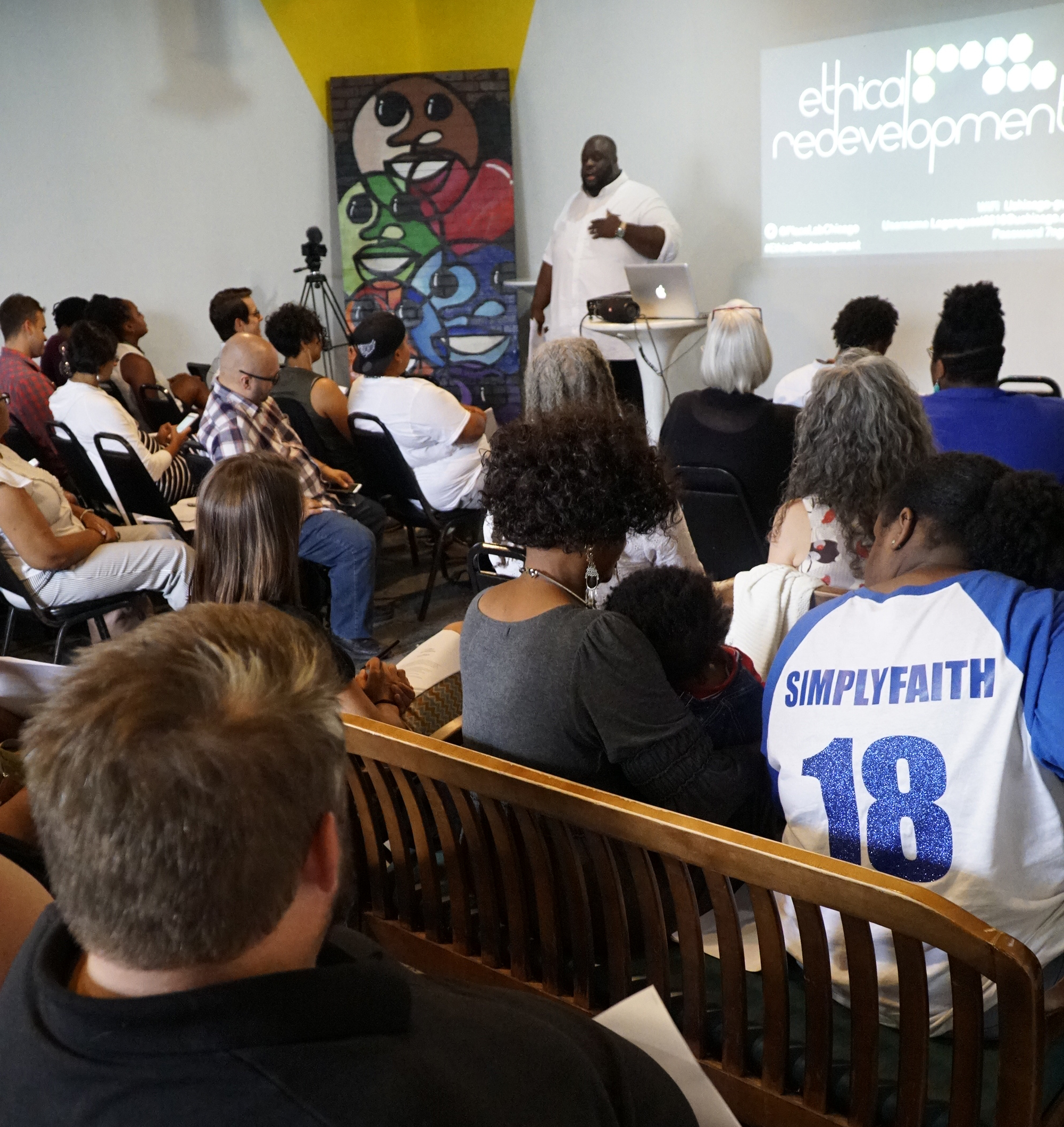Report on the Environmental Education Leadership Corps (EELCorps) and its Contribution to Sustainable Development Goals
Program Overview
The Kentucky Environmental Education Council (KEEC) is actively recruiting for its Environmental Education Leadership Corps (EELCorps) program, an AmeriCorps initiative designed to advance environmental literacy and stewardship across Kentucky. Established in 2018, EELCorps places members at various host sites, including nature centers, conservation districts, public schools, and solid waste programs, for one to two-year service terms. The program has a significant track record, having supported 147 member positions across 42 host sites since its inception. The core mission of EELCorps is to foster a deeper connection between Kentucky’s communities and their environment through targeted educational outreach, thereby supporting a statewide balance between environmental sustainability and economic vitality.
Alignment with Sustainable Development Goals (SDGs)
The EELCorps program is a practical implementation of several key United Nations Sustainable Development Goals (SDGs), contributing directly to a global agenda for a sustainable future.
- SDG 4: Quality Education: The program’s central focus is on providing high-quality environmental education. EELCorps members develop and deliver lesson plans, lead outdoor learning experiences, and create outreach materials for both youth and adults. This directly addresses Target 4.7, which calls for ensuring all learners acquire the knowledge and skills needed to promote sustainable development.
- SDG 8: Decent Work and Economic Growth: By providing training, a living allowance, and an educational award, EELCorps creates pathways to careers in the green economy. It equips individuals with valuable professional experience, fostering decent work and contributing to sustainable economic growth.
- SDG 11: Sustainable Cities and Communities & SDG 12: Responsible Consumption and Production: Members are placed in organizations directly involved in community sustainability, such as solid waste management districts and conservation districts. Their work in educating the public on waste reduction and environmental conservation contributes to building more sustainable communities and promoting responsible consumption patterns.
- SDG 13: Climate Action & SDG 15: Life on Land: Through education and hands-on activities at nature preserves and parks, the program raises awareness of climate change and the importance of protecting terrestrial ecosystems. This educational foundation is critical for inspiring community-level climate action and fostering stewardship of local biodiversity.
- SDG 17: Partnerships for the Goals: EELCorps exemplifies a multi-stakeholder partnership. It is a collaboration between a state agency (KEEC), a national service program (AmeriCorps), and numerous local government and non-profit host sites, demonstrating an effective model for achieving sustainability objectives.
Recruitment and Member Benefits for 2025
KEEC is seeking to fill 14 full- and part-time positions for a service term beginning September 1, 2025. Applications are accepted on a rolling basis, with priority given to those submitted by July 31, 2025.
Member Compensation and Professional Development
- Financial Support: Full-time members receive a living allowance of $21,000 and are eligible for a Segal Education Award of $7,395 upon successful completion of their service.
- Benefits: Health insurance and other benefits are provided to full-time members.
- Career Advancement: The program offers significant professional development, training, and networking opportunities to prepare members for careers in environmental and educational fields.
2025 Host Sites
Positions are available at the following 11 host organizations:
- Bluegrass Greensource
- Boyle County Fiscal Court-Solid Waste
- Creasey Mahan State Nature Preserve
- Fayette County Public Schools
- Franklin County Fiscal Court-Solid Waste
- Franklin-Simpson Parks and Recreation
- Jefferson Memorial Forest
- Kenton County Conservation District
- Louisville Nature Center
- Louisville/Jefferson County Metro Government Waste Management District
- The Parklands of Floyd’s Fork
SDGs Addressed in the Article
- SDG 4: Quality Education
- SDG 8: Decent Work and Economic Growth
- SDG 11: Sustainable Cities and Communities
- SDG 12: Responsible Consumption and Production
- SDG 13: Climate Action
- SDG 15: Life on Land
Specific SDG Targets
-
Target 4.7: Education for Sustainable Development
- The article focuses on the Environmental Education Leadership Corps (EELCorps), a program whose main goal is to “help Kentucky learners build connections with the environment through education.” This directly aligns with Target 4.7, which aims to ensure all learners acquire knowledge and skills for sustainable development. The program members “teach environmental education lessons to youths and adults” and educate communities on how to “solve current environmental challenges with a goal of maintaining a balance between sustainability and a thriving economy.”
-
Target 8.5: Full and Productive Employment and Decent Work
- The EELCorps program creates employment opportunities. The article states it is recruiting for “full- and part-time members” and provides details of “decent work” conditions, including a “$21,000 living allowance, a $7,395 Segal Education Award, health insurance and other benefits.” This initiative contributes to achieving full and productive employment, particularly for those starting their careers.
-
Target 8.6: Youth Employment, Education, and Training
- The program is designed to “kick-start their careers as educators” by providing “training, experience, professional development and networking opportunities.” This directly addresses the goal of reducing the proportion of youth not in employment, education, or training (NEET) by offering a structured pathway into the environmental education field.
-
Target 11.6: Reduce Environmental Impact of Cities
- The article mentions that EELCorps members work at host sites that include “solid waste programs” and specific government entities like “Boyle County Fiscal Court-Solid Waste,” “Franklin County Fiscal Court-Solid Waste,” and “Louisville/Jefferson County Metro Government Waste Management District.” The educational work performed at these sites contributes to better municipal waste management, which is a key component of reducing the environmental impact of cities.
-
Target 12.8: Promote Awareness for Sustainable Lifestyles
- The program’s activities are centered on ensuring people have the necessary information for sustainable lifestyles. The article notes that members “build awareness in their community” and “create lesson plans and outreach materials” to teach people “how to take care of our environment.” This directly supports the goal of raising public awareness for sustainable development.
-
Target 13.3: Improve Climate Education and Awareness
- By focusing on teaching communities how to “solve current environmental challenges,” the program inherently addresses climate change, which is a primary global environmental challenge. The educational efforts of EELCorps build human and institutional capacity for climate action through awareness-raising, which is the core of Target 13.3.
-
Target 15.5: Protect and Restore Terrestrial Ecosystems
- The article lists several host sites that are directly involved in the conservation of terrestrial ecosystems, such as “nature centers,” “conservation districts,” “Creasey Mahan State Nature Preserve,” “Jefferson Memorial Forest,” and “The Parklands of Floyd’s Fork.” The educational activities conducted at these sites, including leading “outdoor learning and field trips,” promote awareness and action towards halting the degradation of natural habitats.
Indicators for Measuring Progress
-
Indicators for Targets 4.7, 12.8, and 13.3
- Number of educators trained and deployed: The article implies this indicator by stating the program has had “147 member positions” since 2018 and is currently recruiting for “14 positions.”
- Number of educational institutions and community programs involved: This is indicated by the mention of “42 host sites” in total, with 11 current sites listed, including “public schools,” “nature centers,” and “conservation districts.”
- Number of people reached through educational programs: While not quantified, the article implies this by stating members “teach environmental education lessons to youths and adults” and “organize or support events and community programs.”
-
Indicators for Targets 8.5 and 8.6
- Number of jobs created: The article specifies “14 positions” are available, contributing directly to employment.
- Provision of decent work conditions: This is indicated by the specific mention of a “$21,000 living allowance,” a “$7,395 Segal Education Award,” and “health insurance.”
- Number of youth receiving job-related training: The program provides “training, experience, professional development and networking opportunities” for all its members, who are typically starting their careers.
-
Indicators for Target 11.6
- Number of personnel dedicated to waste management education: The placement of EELCorps members in “solid waste programs” and “Waste Management District” sites serves as a direct indicator of human resources allocated to this issue.
-
Indicators for Target 15.5
- Number of conservation sites supported: The article lists specific host sites like “Creasey Mahan State Nature Preserve” and “Jefferson Memorial Forest,” indicating direct support for institutions dedicated to protecting ecosystems.
Summary Table of SDGs, Targets, and Indicators
| SDGs | Targets | Indicators Identified in Article |
|---|---|---|
| SDG 4: Quality Education | 4.7: Ensure all learners acquire knowledge and skills needed to promote sustainable development. | Number of educators trained (147 alumni, 14 new positions); Number of host sites involved in education (42 total); Creation of lesson plans and outreach materials. |
| SDG 8: Decent Work and Economic Growth | 8.5: Achieve full and productive employment and decent work. 8.6: Reduce the proportion of youth not in employment, education or training. |
Number of jobs created (14 full- and part-time positions); Provision of a living allowance ($21,000), education award ($7,395), and health insurance; Number of members receiving career training and professional development. |
| SDG 11: Sustainable Cities and Communities | 11.6: Reduce the adverse per capita environmental impact of cities, including waste management. | Number of members placed in solid waste programs and waste management districts (e.g., Boyle County, Franklin County, Louisville/Jefferson County). |
| SDG 12: Responsible Consumption and Production | 12.8: Ensure that people everywhere have the relevant information and awareness for sustainable development. | Number of community awareness programs organized; Number of youths and adults taught about environmental care. |
| SDG 13: Climate Action | 13.3: Improve education, awareness-raising and human and institutional capacity on climate change. | Educational programs focused on solving “current environmental challenges.” |
| SDG 15: Life on Land | 15.5: Take action to reduce the degradation of natural habitats. | Number of members placed in nature centers, conservation districts, and state nature preserves (e.g., Creasey Mahan, Jefferson Memorial Forest). |
Source: nkytribune.com







